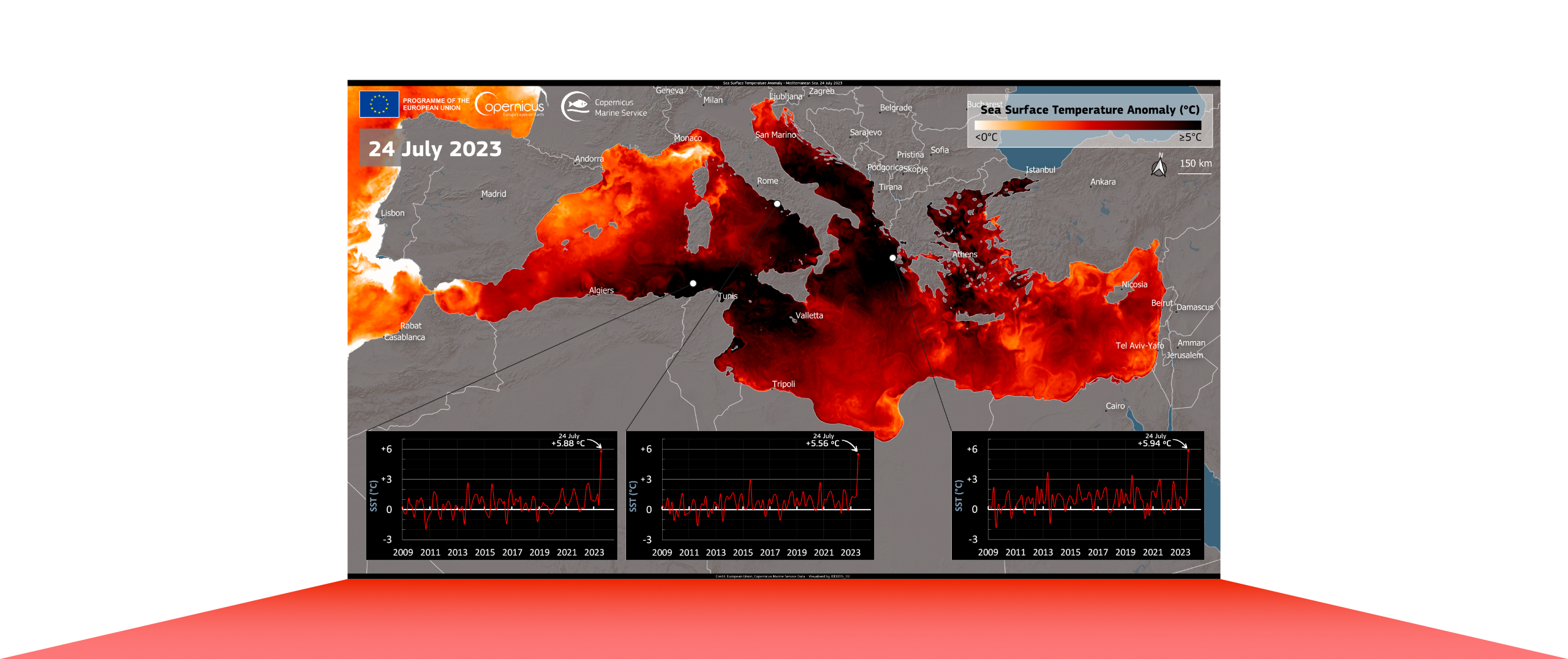BERN, SWITZERLAND – Published this week in Proceedings of the National Academy of Sciences (PNAS), the research offers one of the clearest assessments yet of how global warming is intensifying heat stress across the world’s oceans. The study found that almost half of the marine heatwaves observed between 2000 and 2020 would not have occurred without global warming.
Using a novel modeling approach that reconstructs sea surface temperatures in a hypothetical, stable-climate Earth since 1940, the team compared these simulations to observed data. The results are striking: the average number of days per year with extreme ocean heat has soared from 15 days in the 1940s to nearly 50 days today. In addition to their increasing frequency, these events are also becoming longer-lasting and more intense—with global warming adding an estimated 1°C to the peak temperatures of marine heatwaves.
“This study underscores the profound and accelerating impact of climate change on ocean ecosystems,” said lead author Marta Marcos. “Marine heatwaves endanger vital habitats like coral reefs, kelp forests, and seagrass meadows—with cascading effects on biodiversity, fisheries, and even global weather patterns.”
The international collaboration—involving scientists from ISSI, the Mediterranean Institute for Advanced Studies, the University of Reading, and the University of the Balearic Islands—also revealed regional disparities. In European seas such as the Mediterranean and North Sea, marine heatwaves are both more frequent and more intense, while tropical waters are seeing more frequent events.
Co-author Professor Jon Robson of the University of Reading noted: “Our oceans are not responding uniformly. Understanding these regional differences is crucial for developing targeted strategies to protect vulnerable marine environments.”
The findings carry urgent implications. As the oceans absorb over 90% of the excess heat from greenhouse gas emissions, marine heatwaves are projected to continue rising unless decisive climate action is taken.
“Extreme ocean heat is not just a warning sign—it’s already reshaping ecosystems and amplifying climate risks,” said Marcos. “Our research highlights just how much is at stake.”
M. Marcos, A. Amores, M. Agulles, J. Robson, & X. Feng, Global warming drives a threefold increase in persistence and 1 °C rise in intensity of marine heatwaves, Proc. Natl. Acad. Sci. U.S.A. 122 (16) e2413505122, https://doi.org/10.1073/pnas.2413505122 (2025).


